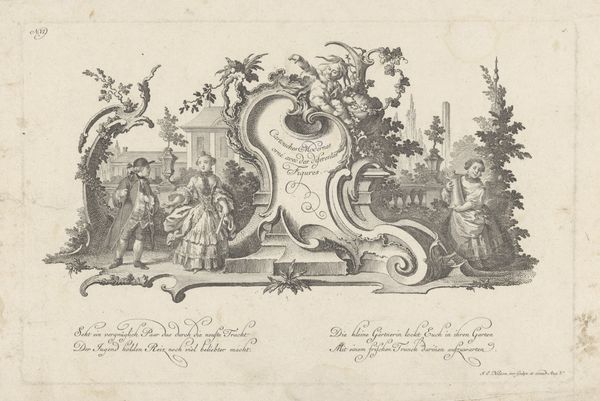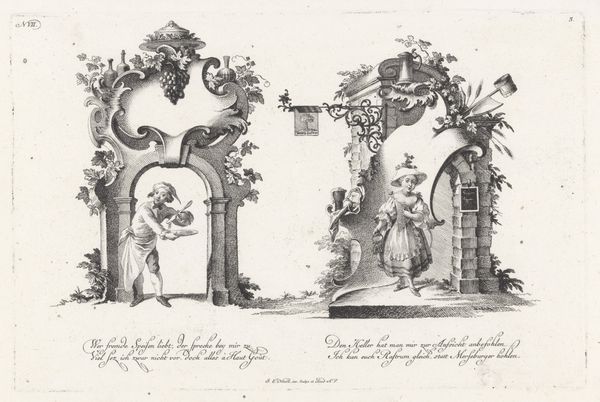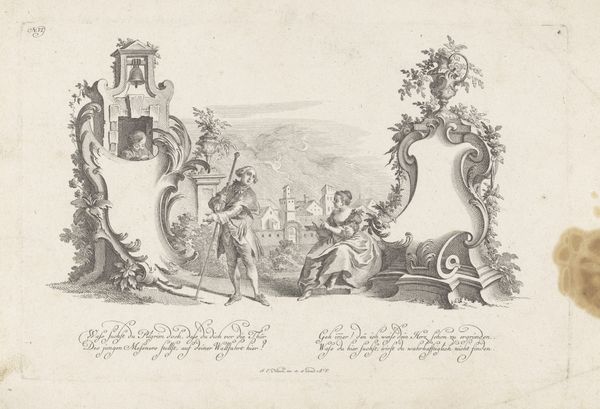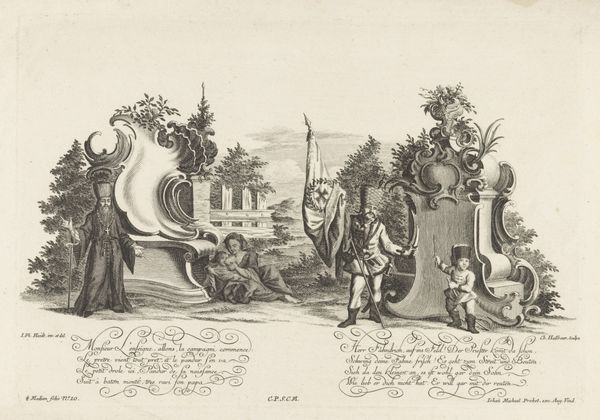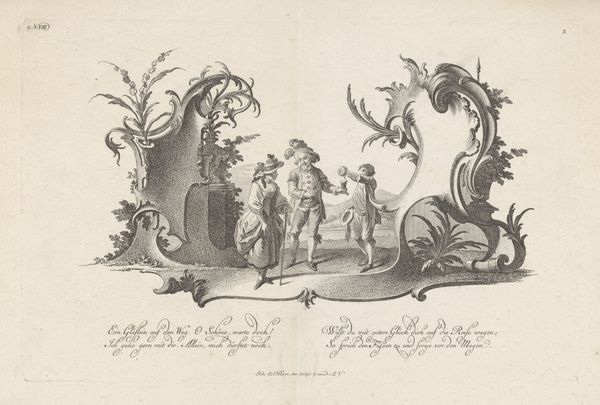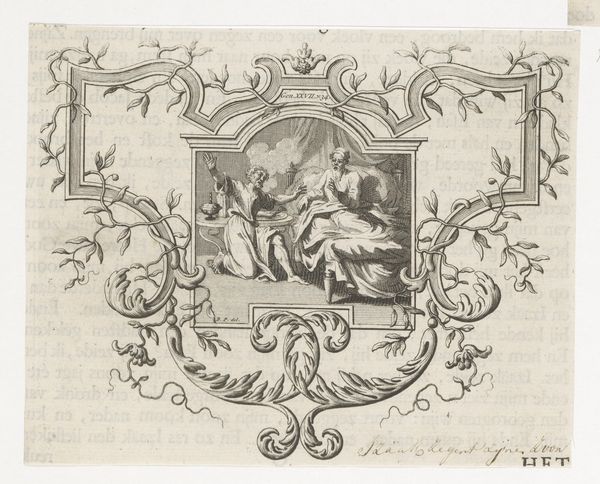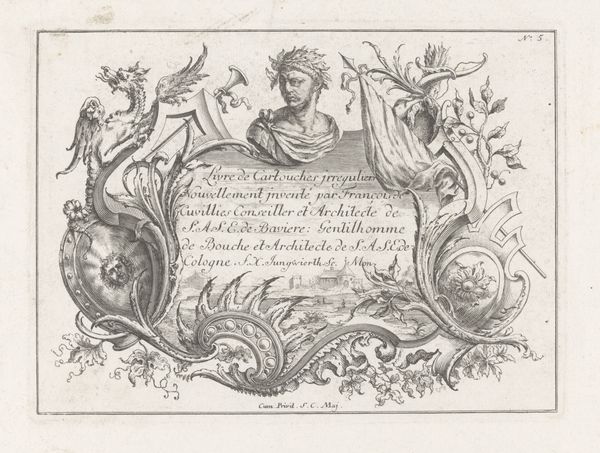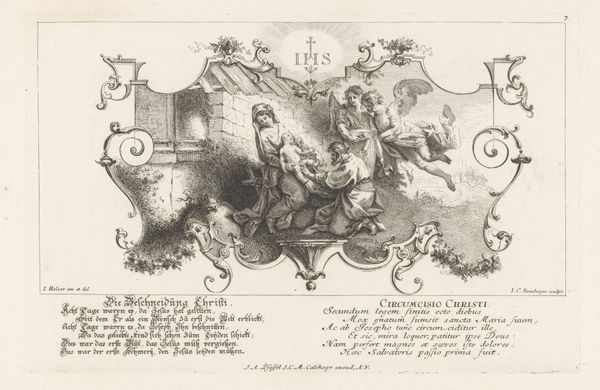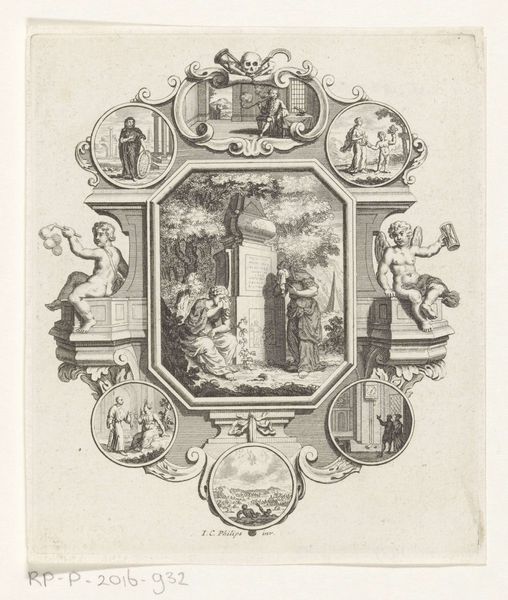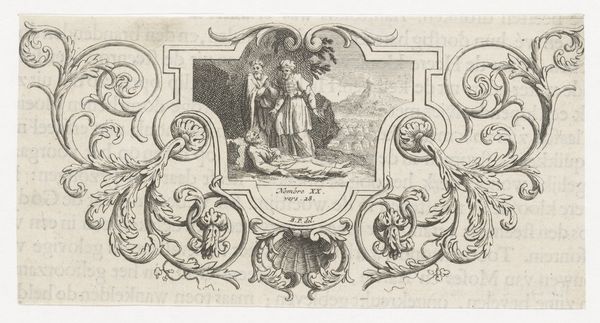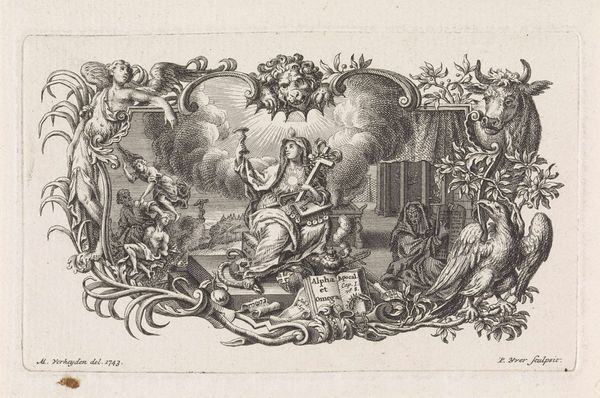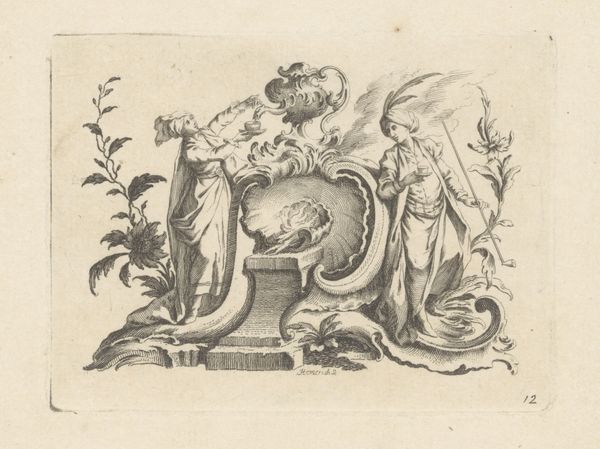
Dimensions: height 183 mm, width 283 mm
Copyright: Rijks Museum: Open Domain
Editor: Here we have "Cartouches met figuren aan tafel", or Cartouches with Figures at Table, an etching by Johann Esaias Nilson from sometime between 1731 and 1788. It's quite ornate. I'm struck by how the central scene is framed by these almost Rococo-like flourishes. What do you see in it? Curator: Formally, it's a fascinating exercise in creating depth within a limited palette. Note how Nilson uses varying densities of line to suggest spatial recession. The foreground elements, the cartouches themselves, are rendered with heavier lines, providing a strong contrast against the delicately etched figures in the garden scene. Editor: So, it’s the contrast that defines the structure? Curator: Precisely. The opposition of these elements—the rigid geometry of the architectural framework versus the organic forms of the surrounding foliage—establishes a compelling visual rhythm. Further, consider the implied lines directing our gaze: the fountain leading into the table, or the arches pulling the eye deeper into the depicted space. What does that accomplish? Editor: It seems to compartmentalize space; keeping your eye moving but within set boundaries. The outer ornamentation is juxtaposed against the clarity of the architectural arch. It's almost as if the composition itself is the message. Curator: An astute observation. Indeed, one could argue that the subject matter is secondary. The primary focus rests on the artist's ability to manipulate line, form, and space to create a harmonious, visually engaging whole. The composition embodies Baroque and early hints of Rococo. Editor: So, it is about the style itself rather than a story within? Thank you! This really opens a new perspective on looking at the artwork.
Comments
No comments
Be the first to comment and join the conversation on the ultimate creative platform.
